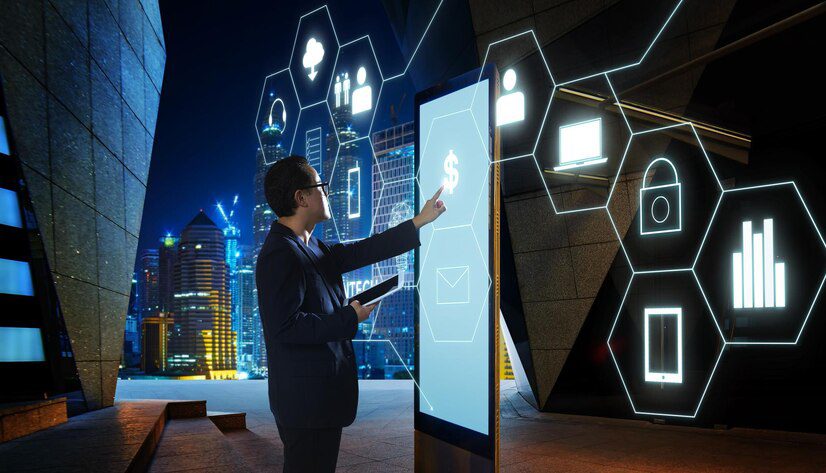The digital world is a double-edged sword. It connects us, entertains us, and empowers us like never before. But lurking in the shadows are cybercriminals, constantly upping their game and devising new ways to steal our data, disrupt our lives, and wreak havoc online. That’s where cybersecurity trends come in – they’re the armor that keeps us safe in this ever-evolving digital battlefield.
So, ditch the #FOMO and get ready to dive into the hottest cybersecurity trends that will shape a more secure digital future:
AI vs. AI: The Rise of Artificial Intelligence in Cybersecurity
Remember those sci-fi movies where robots battle robots? Well, get ready for a similar showdown in cybersecurity. Artificial intelligence (AI) is now a reality, no longer confined to the realm of futuristic fantasies. It’s being used by both the good guys (security professionals) and the bad guys (cybercriminals) to automate attacks and defenses.
Here’s the good news: AI can analyze massive amounts of data to identify and predict cyber threats in real time. Imagine a system that can detect suspicious login attempts or malware before they cause any damage. That’s the power of AI in action.
The Password is Dead, Long Live… What Exactly?
Passwords have been the gatekeepers of our digital lives for decades. But let’s face it, they’re about as secure as a paper airplane in a hurricane. That’s why cybersecurity trends are moving towards passwordless authentication.
Think fingerprint scanners, facial recognition, or even one-time codes sent to your phone. These methods are not only more secure but also way more convenient (no more struggling to remember that ultra-complicated password you created!).
The Expanding Attack Surface: Securing the Internet of Things (IoT)
Our homes are becoming increasingly “smart” – thermostats that adjust automatically, refrigerators that order groceries, and even toasters that can send you notifications (seriously, who needs a smart toaster?). But all these interconnected devices, known as the Internet of Things (IoT), create a vast new attack surface for cybercriminals.
Cybersecurity trends are focusing on securing these smart devices, ensuring they have strong built-in security features and are regularly patched with updates.
The Human Element: Rethinking Cybersecurity Awareness
Technology is only one piece of the cybersecurity puzzle. The weakest link in the chain is often us, the human users. Phishing emails that look legit, social engineering scams that prey on emotions – these tactics can fool even the most tech-savvy individuals.
Cybersecurity trends are emphasizing the importance of cybersecurity awareness training. Educating employees and individuals about common threats and how to avoid them is crucial for building a strong defense against cyberattacks.
The Evolving Threat Landscape: The Rise of Ransomware-as-a-Service (RaaS)
Ransomware – that nasty malware that encrypts your files and demands a ransom to unlock them – has been a major headache for businesses and individuals alike. But get this: cybersecurity trends show a rise in Ransomware-as-a-Service (RaaS).
Think of it like a criminal renting out their hacking tools to anyone with a grudge or a desire for quick cash. This makes ransomware attacks more accessible and potentially more widespread. Businesses and individuals need to be extra vigilant and have robust backup and recovery plans in place.
Collaboration is Key: Public-Private Partnerships in Cybersecurity
Cybercrime is a global problem, and it requires a global solution. Cybersecurity trends highlight the importance of public-private partnerships between governments, security companies, and critical infrastructure providers.
By sharing information about threats and collaborating on defensive strategies, we can create a more unified front against cyber criminals.
Regulation Revolution: The Growing Focus on Data Privacy
Data breaches and privacy concerns are at an all-time high. Consumers are demanding more control over their personal information, and governments are taking notice.
Cybersecurity trends point towards stricter regulations around data privacy, such as GDPR (General Data Protection Regulation) in Europe and CCPA (California Consumer Privacy Act) in the US. These regulations not only protect consumers but also encourage businesses to prioritize data security.
The Takeaway: Staying Ahead of the Curve
The digital landscape is constantly evolving, and so are the cybersecurity trends that keep us safe. By staying informed about these trends and implementing appropriate security measures, we can create a more secure digital future for everyone.
Remember, cybersecurity is a shared responsibility. Individuals, businesses, and governments all need to play their part in creating a safer online environment.







